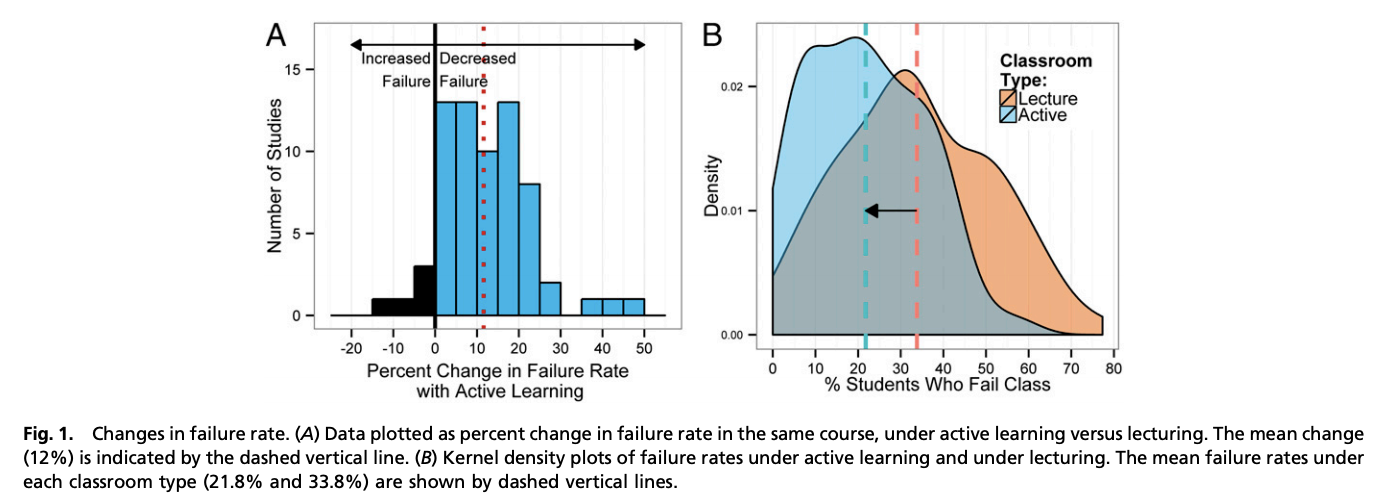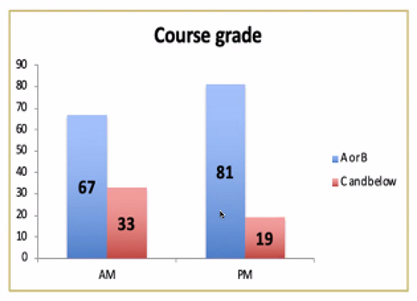|
For nearly the last two decades, STEM educators, particularly those in biology, have been moving toward a more active learning model for undergraduate courses. Dr. Marcia Shofner has been at the forefront of that effort at University of Maryland. Dr. Shofner is a Senior Lecturer in the Entomology Department, teaching several sections per year of Ecology and Evolution. Not only is this course often an early undergraduate’s first introduction to college biology, but it is often a Graduate Teaching Assistant’s first foray into teaching as well. At this week’s colloquium, Dr. Shofner shared a “peer through the lens” into designing and implementing an active learning course with the Entomology community. The early 21st Century saw a flurry of new pedagogical approaches and education research focused on moving away from the traditional lecturing model and toward course design with hands-on, discussion based, and critical thinking activities included, coined “active learning”. Research shows that active learning can significantly improve outcomes for students, especially those who are struggling to earn high test grades (Haak et al. 2011, Graham et al 2013, and others) . Work from Scott Freeman and colleagues (2014) exemplifies this body of literature; they found that incorporating active learning in the classroom can decrease the failure rate up to 12% (Figure 1, from Freeman et al. 2014). As a new faculty member, Dr. Shofner joined the team working to implement these perspectives at UMD, as early as 2009, and has been assessing and tweaking her approach ever since. Dr. Shofner emphasized that active learning is an adjustment for both teachers and students, and requires intention and hard work to be successful. Professors need to give up some control of time in the classroom, while students need to move out of the “comfort zone” of listening to lecture and furiously scribbling notes. Ideal active learning activities require discussion and critical thinking, and do not have a single correct answer. This type of learning is participatory, and can lead to some discomfort and discordance. This type of discomfort is a hallmark of the “growth mindset” approach to education (Dweck 2007). Discomfort also means that change does not necessarily come naturally- it requires years of effort and reinforcement. In 2014, Dr. Shofner earned an Elevate Fellowship through the Teaching and Learning Transformation Center at the University of Maryland to redesign her course and incorporate active learning into her classroom. Given the success that active learning courses showed elsewhere, she was excited to integrate this form of learning into her own course. Her first major step was replacing three of the course’s lecture days with lessons focused on active learning. This has since evolved into six entire lecture days that are now completely devoted to active learning activities, along with many other partial class periods incorporating elements of active learning. At the heart of this peer-to-peer learning are the ULAs- undergraduate learning assistants- students who previously excelled in the course and have volunteered to serve as learning assistants for valuable teaching experience. These students build, shape, and guide active learning activities based on their own experiences in the course and are a large part of the success of the course. Dr. Shofner’s analyses of the program showed clear improvements following the integration of active learning into her classroom. She assessed the program’s success by incorporating active learning elements into one section of the course while leaving another untouched. Students’ reflections on group activities and peer review processes in the lecture were largely positive, and students in sections that incorporated the new system completed the course with significantly higher grades (Figure 2). The effect was clear enough that Dr. Shofner soon chose to begin integrating active learning into all of her sections to allow all students in the course the benefits of the new approach. The model can also have many benefits to the learning assistants. In addition to gaining teaching experience, several ULAs have been afforded the opportunity to present their peer-to-peer learning research on and off campus and have earned research awards commending them for their efforts. As the program continues to grow, ULAs have also begun hosting weekly review sessions in addition to peer tutoring and guided study sessions. Additionally, Dr. Shofner is currently implementing a new peer-to-peer tutoring program into the course, in which students who performed well on a previous exam are paired with students who performed poorly on the exam for one-on-one review.
Given the success of the program, it's no surprise that Dr. Shofner continues to expand and refine the presence of active and peer-to-peer learning in her course. She constantly monitors class data and offers extra credit in exchange for answering surveys that help her to continue to improve the program. Despite the added difficulties, she finds this new approach to teaching to be a more rewarding experience both for her and her students. It will be interesting to observe the growing future of active learning, both in Dr. Shofner’s classroom and on a larger scale, and to discover the difference it will make to our understanding of education as a whole. Arielle Arsenault-Benoit is a PhD student in the Fritz lab, studying the community ecology and landscape genomics of Culex mosquitoes on an urban to rural gradient. Alireza Shokoohi is a Master’s student in the Lamp lab, currently investigating management practices to enhance populations of beneficial natural enemies in agricultural drainage ditches. Citations: Dweck, C.S., 2008. Mindset: The new psychology of success. Random House Digital, Inc.. Freeman, S., Eddy, S.L., McDonough, M., Smith, M.K., Okoroafor, N., Jordt, H. and Wenderoth, M.P., 2014. Active learning increases student performance in science, engineering, and mathematics. Proceedings of the National Academy of Sciences, 111(23), pp.8410-8415. Graham, M.J., Frederick, J., Byars-Winston, A., Hunter, A.B. and Handelsman, J., 2013. Increasing persistence of college students in STEM. Science, 341(6153), pp.1455-1456. Haak, D.C., HilleRisLambers, J., Pitre, E. and Freeman, S., 2011. Increased structure and active learning reduce the achievement gap in introductory biology. Science, 332(6034), pp.1213-1216. Comments are closed.
|
Categories
All
Archives
June 2024
|
Department of Entomology
University of Maryland
4112 Plant Sciences Building
College Park, MD 20742-4454
USA
Telephone: 301.405.3911
Fax: 301.314.9290
University of Maryland
4112 Plant Sciences Building
College Park, MD 20742-4454
USA
Telephone: 301.405.3911
Fax: 301.314.9290



 RSS Feed
RSS Feed




